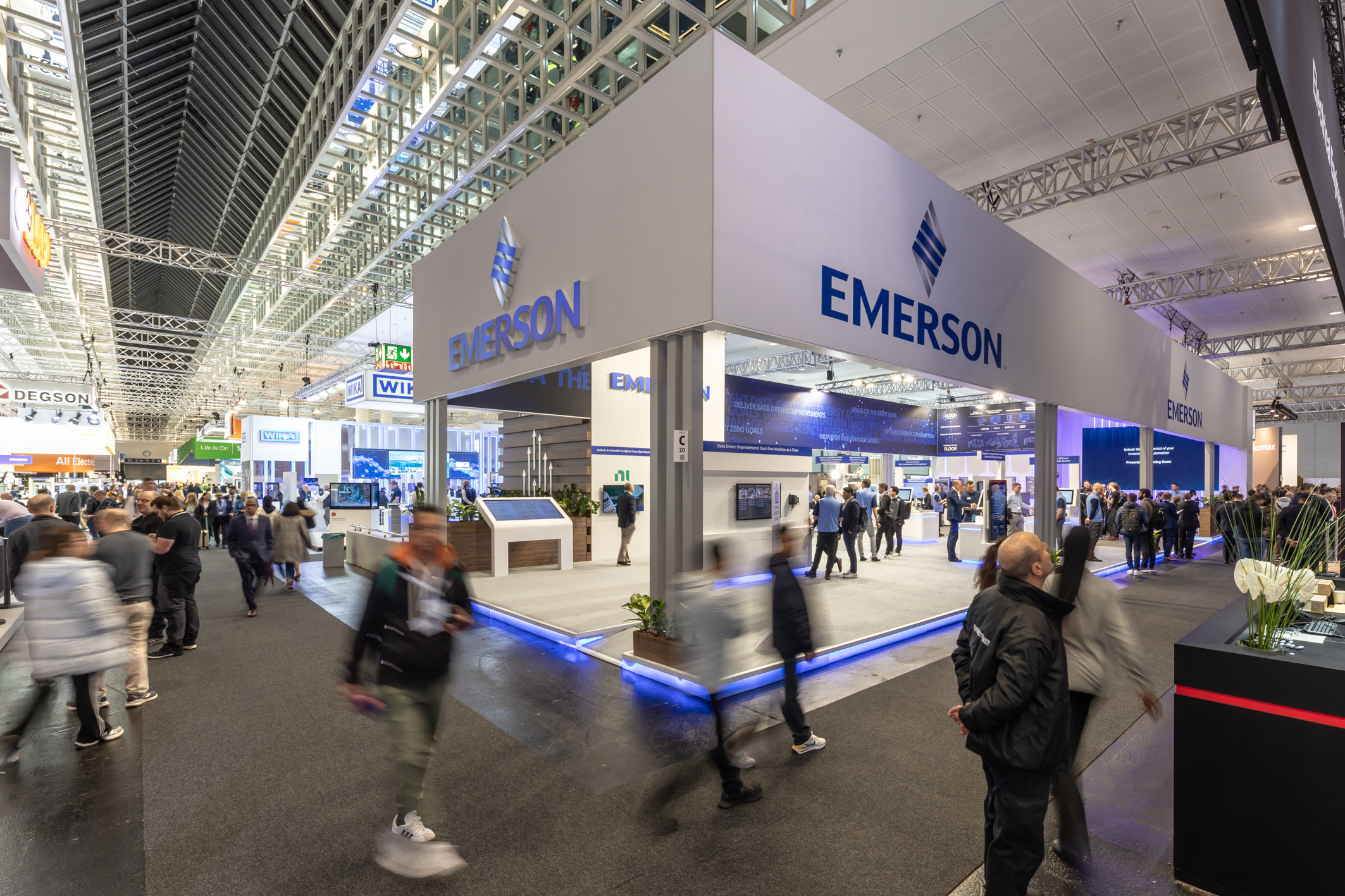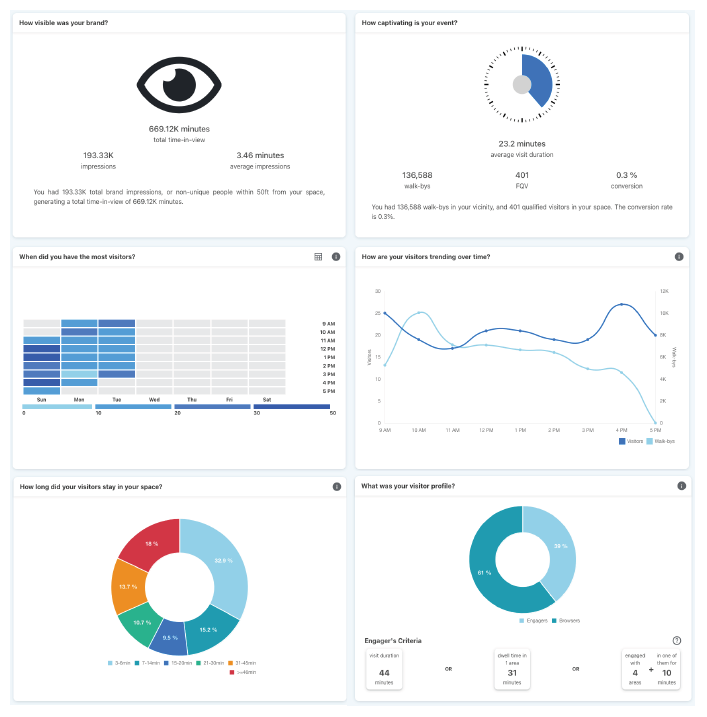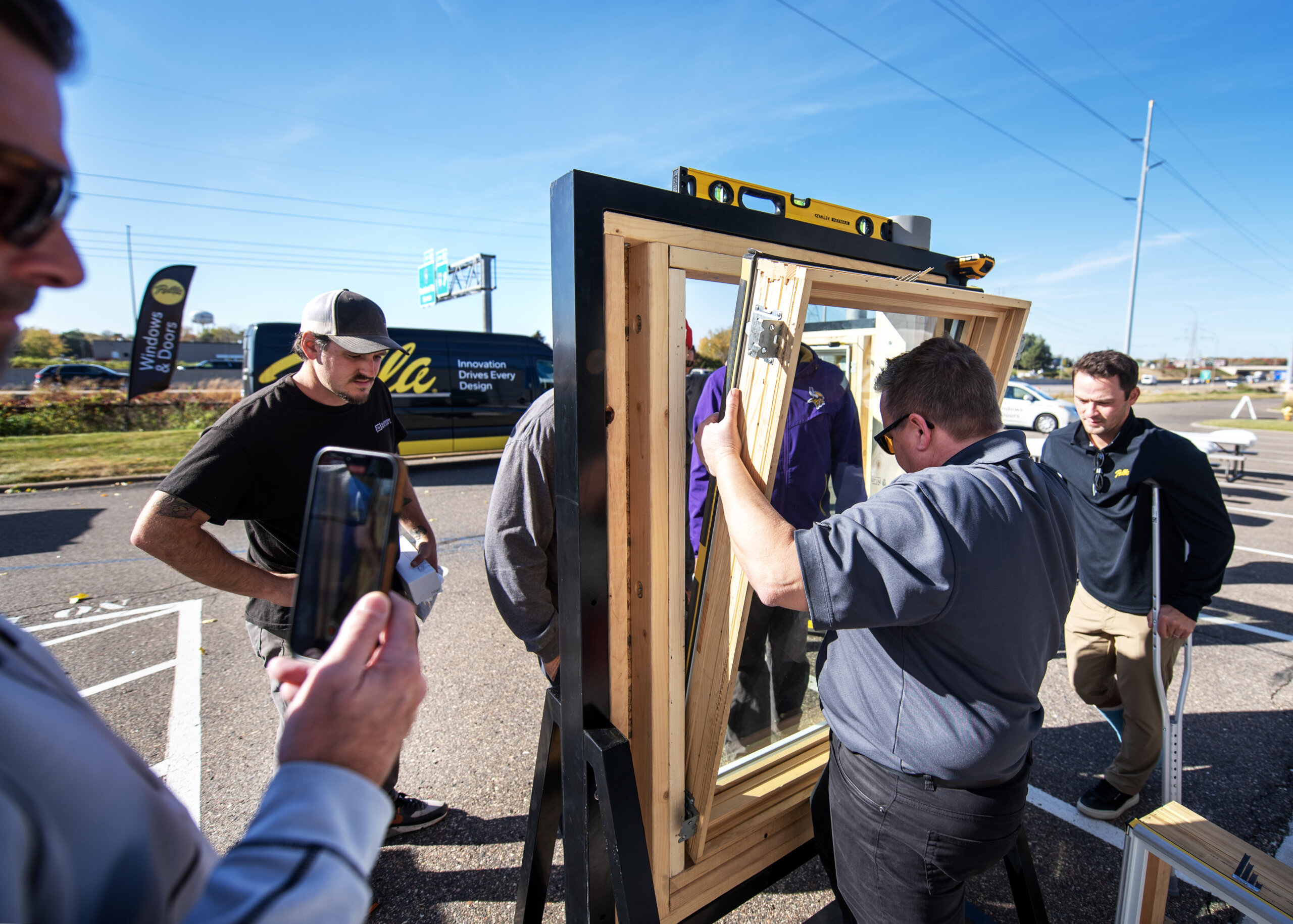Table of Contents
Introduction:
Trade shows, like any sophisticated marketing campaign, offer a unique opportunity for businesses to gain significant exposure, generate high-quality leads, and establish long-lasting relationships within their industry. Just as marketers track impressions, engagement rates, and conversions across digital campaigns, trade show success can—and should—be measured with similar precision and analytical rigor.
However, attending a trade show without a concrete plan for measuring return on investment (ROI) often results in wasted opportunities. In this guide, we’ll walk you through the foundational steps for measuring and maximizing your trade show ROI—from defining your key performance metrics and setting measurable goals to executing effective follow-up strategies that ensure your trade show investment pays off. Whether you’re new to trade shows or looking to improve your approach, this guide will provide you with the tools to build a successful, ROI-focused trade show strategy.
Chapter 1: Defining ROI in exhibiting
When most businesses think about ROI, they focus on the bottom line—how much revenue was generated compared to the investment. While measuring direct financial impact is crucial, the true value of trade show participation encompasses a much broader range of factors. A mix of both immediate and long-term benefits contribute to the trade show’s success. ROI in the trade show context is about balancing the immediate returns with the strategic, long-term benefits.
The immediate financial returns are the most straightforward to measure. These include immediate sales generated from trade show leads. However, the long-term returns often prove equally valuable, though they may be more challenging to quantify.
Where to start: the full investment picture
ROI calculations begin with understanding the total cost of attending the trade show. This includes not just the cost of the booth space and materials, but also travel, accommodations, promotional materials, staff time, and any additional services like lead tracking software or interactive booth technology.
Once you’ve calculated your total investment, the next step is to identify all potential returns, both tangible and intangible.
Key Metrics to Track
To maximize your ROI, you need to track and measure several key performance indicators (KPIs) that align with your trade show objectives. Some of the most important metrics include:
Lead Generation: How many new leads did you acquire? This is a direct measure of the success of your booth engagement strategies. However, it’s important to also assess the quality of those leads. True trade show success relies on understanding who your leads are, their level of authority in decision-making, and their genuine interest in your offerings. Consider tracking not only the number of leads collected but also their progression through your sales pipeline in the weeks and months following the show.
Brand Awareness: One of the primary reasons for attending a trade show is to increase visibility in your market. Booth traffic provides an initial indicator, but brand awareness metrics require a more nuanced approach to measurement. Understanding how long visitors engage with your booth, the depth of their interactions with staff, and their level of interest in your products or services provides more valuable insights than simple head counts. Social media engagement during and after the show can offer concrete metrics for brand visibility, while press coverage and industry mentions provide additional validation of your market presence.
Customer Engagement: Customer engagement quality has become increasingly important in the digital age. Today’s trade show visitor expects more than a simple product pitch and business card exchange; they seek meaningful interactions that provide genuine value. Track how long visitors stayed at your booth, how many people attended your product demos, and how many meaningful conversations your team had. These interactions provide a clearer picture of how well your booth engaged your target audience.
Networking and Partnerships: While these metrics can be more difficult to quantify, networking opportunities with potential partners or industry influencers can lead to future collaborations that drive growth. Keeping track of the number of meetings scheduled with potential partners or new connections made can help you measure the strategic value of your presence at the show.
STAR’s approach to ROI measurement
STAR Exhibits provides advanced tools and technologies designed to help exhibitors measure and enhance their trade show ROI. From interactive booths that capture visitor data to integrated CRM systems that allow you to follow up with leads in real-time, STAR ensures you have the insights you need to make informed decisions. By using STAR’s technology, you can easily track booth traffic, engagement levels, and even post-show conversions, allowing you to measure both short-term wins and long-term strategic gains.
At CES, one of STAR’s clients, a leading tech company, used STAR’s real-time engagement tracking tools to capture data on booth interactions. By analyzing which product demos attracted the most attention and how long visitors stayed at the booth, they were able to optimize their booth design for future trade shows, increasing their lead quality by 25% at their next event.
Chapter 2: Setting measurable goals
Setting clear, measurable goals before attending a trade show is essential for success. Without well-defined objectives, your efforts can become scattered, and it will be difficult to assess whether your trade show presence was truly effective. Whether your goal is to increase lead generation, improve brand visibility, or launch a new product, having a targeted plan ensures that your team remains focused throughout the event.
Goals not only provide direction but also serve as benchmarks for success. For example, if your goal is to generate 100 qualified leads, tracking your progress throughout the event helps your team stay motivated and allows for adjustments if you’re falling short.
Types of Goals for Exhibitors
Lead Generation: This is often the primary goal for many exhibitors. However, again it’s important to focus on quality over quantity. Generating 200 leads may sound impressive, but if only 10% of them are viable prospects, the true impact is limited. Instead, aim for qualified leads that have a higher likelihood of converting into customers. You can achieve this by pre-qualifying leads at your booth through targeted questions or offering different levels of interaction based on interest.
Brand Awareness: Trade shows offer an unparalleled opportunity to introduce your brand to a broader audience. Your goal might be to increase booth traffic by 30% compared to last year or to gain a certain number of media mentions. Measuring brand awareness can be tricky, but tools like social media monitoring and booth traffic counters can provide valuable insights.
Product Launches: If you’re unveiling a new product, your goal might focus on the number of product demonstrations given or the amount of media coverage received. Product launches can drive immediate interest and serve as a foundation for long-term sales growth.
Competitor Analysis: While attending trade shows, you have the unique opportunity to see your competitors in action. Setting a goal to visit competitor booths and assess their marketing strategies can help you refine your own approach. For example, you might set a goal to conduct competitive analysis at three of your closest competitors’ booths and identify key differentiators that can be leveraged in future marketing efforts.
Partnering with STAR for Goal Success
STAR’s strategic planning services provide exhibitors with guidance on how to set realistic, measurable trade show goals. From helping you determine the best KPIs to offering insights on how to meet those benchmarks, STAR ensures that your trade show efforts are aligned with your business objectives. With tools like lead scoring systems and post-event analytics, STAR helps you refine your goals for optimal success.
For example, a healthcare company partnered with STAR to set specific goals for their trade show presence at HIMSS 2022. By targeting a 40% increase in booth engagement and using STAR’s lead scoring system, they not only met but exceeded their lead generation goal, with a 45% increase in qualified leads year-over-year.
Chapter 3: Pre-Show strategies for ROI optimization
Success at trade shows is determined long before the event begins. The preparation phase is crucial, requiring careful coordination of booth design, marketing efforts, and team training. A well-executed pre-show strategy not only maximizes your chances of achieving ROI goals but also ensures your team can confidently handle any challenges that arise during the event. Let’s explore the key components that make up an effective pre-show strategy.
1. Strategic Booth Design
Your booth is the centerpiece of your trade show presence, and its design plays a crucial role in determining whether attendees will stop by or pass it over. A well-designed booth should not only be visually appealing but also functional, allowing for easy flow of traffic and providing interactive elements that engage visitors. STAR’s custom exhibit designs take into account the specific goals of each exhibitor, ensuring that your booth is not just eye-catching but also tailored to your business objectives.
2. Pre-Event Marketing
Marketing your trade show attendance ahead of time is essential for driving traffic to your booth. Your pre-show marketing efforts should focus on raising awareness, generating excitement, and setting appointments with key prospects. Utilize multiple channels, including email, social media, and even direct mail campaigns, to reach your target audience.
A successful pre-event marketing campaign will include:
- Email Invitations: Send personalized invitations to your existing customers, prospects, and partners. Offer incentives such as exclusive product demos or giveaways to entice them to visit your booth.
- Social Media Engagement: Use platforms like LinkedIn, Twitter, and Instagram to promote your presence at the trade show. Create a unique event hashtag and encourage your followers to engage with your content.
- Targeted Advertising: Consider running geo-targeted ads on social media or through paid search to attract attendees who are already planning to attend the event.
3. Training Your Team
The effectiveness of your booth staff can make or break your trade show success. Pre-show training should cover key talking points, product demonstrations, and strategies for engaging with attendees. This not only ensures that your team is knowledgeable but also that they are prepared to answer questions, qualify leads, and schedule follow-up meetings. Consider creating a detailed playbook that outlines specific processes for different types of visitor interactions. This might include qualification criteria, key questions to ask, common objections and responses, and clear procedures for lead capture and follow-up. The goal is to ensure consistency in visitor experience while allowing for the natural personality and expertise of each team member to shine through.
4. Securing Strategic Appointments
Scheduling meetings with key prospects, partners, and media representatives before the show gives your team the advantage of guaranteed face-to-face interactions. STAR’s event technology allows for seamless scheduling and appointment management, ensuring that your team can focus on high-priority engagements during the show.
Chapter 4: Post-show follow-up – the key to ROI
The end of the trade show doesn’t mean the end of your marketing efforts. In fact, post-show follow-up is one of the most critical components of maximizing your ROI. A timely and strategic follow-up ensures that you remain top-of-mind for potential customers, that key learnings are documented and leveraged, and that the momentum continues long after the event has concluded.
Customer Communication
The first 48 hours after a trade show are the most critical for follow-up. By following up immediately, you capitalize on the excitement and interest generated during the event. STAR’s lead tracking tools enable you to categorize and prioritize leads so that your sales team can follow up with the hottest prospects first.
Send personalized follow-up communication with the contacts you gathered, referencing specific interactions or interests expressed at the booth to make the messages relevant and memorable. Highlight any value-adds, such as additional product information, an invitation to a private demo, or an exclusive post-show offer.
Post-Show Analysis
Once the show is over, it’s essential to evaluate your performance and assess whether you met your goals. This involves reviewing your KPIs, analyzing lead quality, and calculating your overall ROI. STAR’s analytics platform provides detailed post-show reports that help exhibitors measure their success and identify areas for improvement in future trade shows.
Additionally, assess the design and layout of your booth, along with any interactive elements, to determine which features resonated most with attendees. Armed with these insights, you can refine everything from booth design and pre-show marketing tactics to on-site engagement strategies. Taking the time to document and implement changes based on this analysis ensures a cycle of continuous improvement, helping you maximize ROI at every future trade show.
Achieve exceptional ROI with confidence
Trade shows present unparalleled opportunities for businesses to connect, engage, and grow. However, achieving meaningful ROI requires more than simply showing up—it demands strategic planning, actionable goals, and precise execution. From understanding your investment to evaluating success metrics, this guide has provided the framework to help you maximize your returns.
At STAR, we specialize in creating custom exhibit solutions tailored to your unique business objectives. With decades of experience and cutting-edge tools, we’re here to support you every step of the way—from strategic booth design and pre-show marketing to real-time analytics and post-show follow-ups.
Imagine walking away from your next trade show with more than just leads—walk away with insights, impact, and a clear roadmap for long-term success. STAR’s innovative solutions ensure your brand doesn’t just participate in the event but becomes a standout presence that drives measurable growth.
Your Next Step:
The road to trade show success starts now. Whether you’re refining your existing strategy or embarking on your first exhibit, STAR is your trusted partner in achieving exceptional ROI. Let’s build something extraordinary together.
Connect with STAR Today
Learn how our team can help you design an exhibit experience that transforms your goals into tangible results.
Deeper dive.
Discover our library of expert insights, best practices, and experiential marketing tips and tricks to keep you in the know and ahead of the crowd.
InsightsSustainability in Action
The Strategic Edge
The Power of Creative Strategy
Let’s connect.
We are here to transform every space into an amazing story. Call, email, or chat with us anytime to learn more.
Email us
Call
"*" indicates required fields





